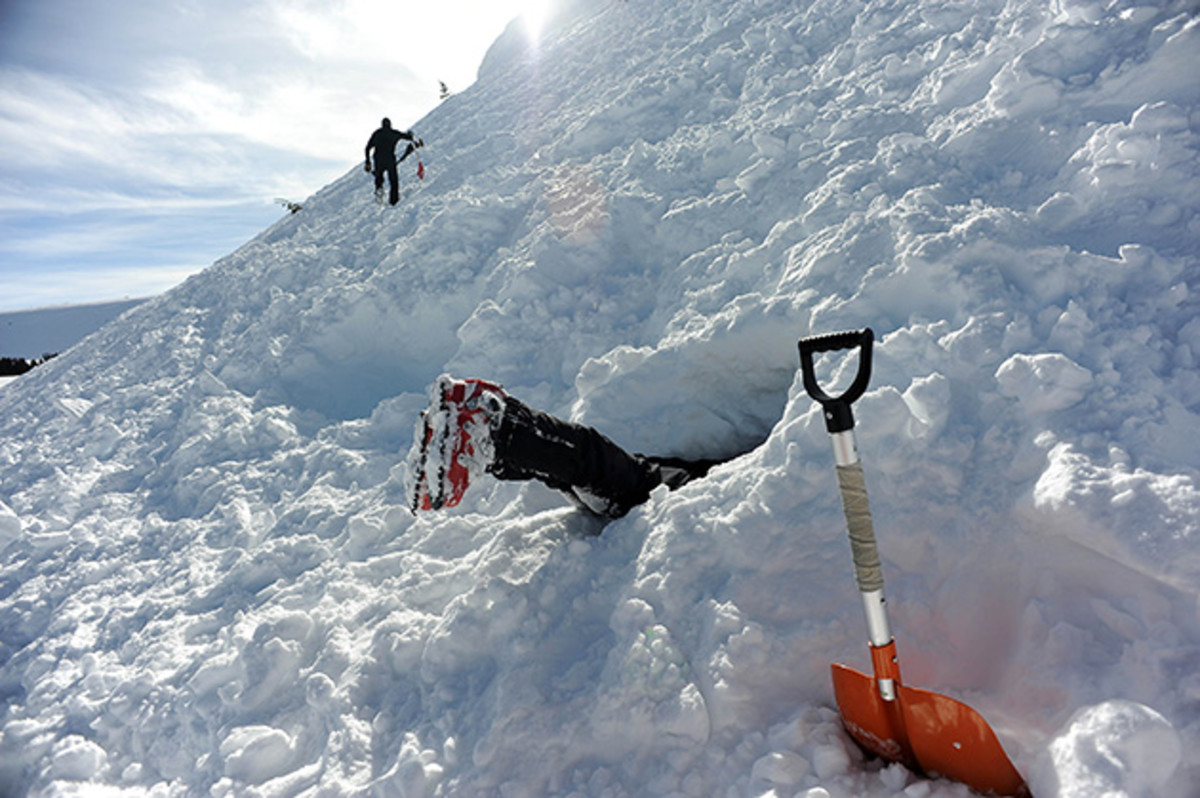Teton Gravity Research: Learning the basics of avalanche safety

Almost 20 years ago, Todd Jones got a phone call form a young man who had recently lost a friend in an avalanche accident. The young man had seen Jones, a world-class backcountry skier, survive what looked to be a surely fatal avalanche himself in the seminal snow sports mix tape The Continuum. Jones had recently founded the snow sports media company Teton Gravity Research with his brother Steve. Todd had survived the incident because of training he and his team had undertaken to prepare for avalanches, training this young man and his friend didn’t have.
The conversation stuck with Jones and his brother for years as their company grew and more and more people were killed on the slopes. The occurrence of deaths due to avalanches has almost tripled in the past two decades, from 13 in 1994 to 35 last year, according to data from the Colorado Avalanche Information Center. The dangers even for experts are highlighted by the deaths of two USA Skiing prospects killed in Austria in January.
The increase is mainly attributable to the growing number of adventure seekers who are heading out into the backcountry in search of thrills. As producers of videos that encourage these activities, the Jones brothers felt it was incumbent upon them to help promote safe practices among backcountry enthusiasts. Eight years ago, they started the International Pro Rider Workshop, a three-to-four-day seminar open only to professionals that teaches them first aid, rescue techniques and, of course, avalanche safety.
Todd Jones shared his some of his tips for surviving an avalanche with SI.com:

Prevention
“The simplest way to survive an avalanche is to avoid one,” says Jones. "The simplest way to avoid one is to get educated and train and learn the signs of when to go and when not to go.”
Avalanche prevention starts before ever leaving the cabin in the morning, with five red flags that should be assessed in the morning before a run:
- Recent snow fall. Avalanche risk drops significantly 48 hours after new snow hits the ground.
- Heavy wind that disrupts safely packed snow.
- Recent avalanche activity. This is especially true of natural avalanches that have occurred without human intervention.
- Cracked or broken snow pack.
- Rapid temperature change. A significant change in temperature in the Andes is credited with causing a pair of avalanches in South America that killed three professionals on the same day last year.
Once on the mountain, Jones recommends running frequent tests of the snow’s stability and gradually increasing the height and steepness of slopes ridden to minimize the size of an avalanche if you’ve read the signs wrong.
MORE EDGE: Experience G-force and slopes in a SkyTechSport ski simulator
When you’re in an avalanche
Even the most prudent skier can’t be totally certain that an avalanche won’t occur. There are precious few moments for a rider to do a few small things that could make the difference between life and death.
- Ski at a 45 degree angle from the falling snow. “I can’t tell you how many times someone has kicked an avalanche up, been caught in it and been able to ski out of it,” says Jones.
- Swim to the top. Once caught, ditch your equipment and swim just like in the pool to try to stay at the top of the tumbling snow before it settles. Avalanche airbags can help keep you afloat before the snow settles.
- Clear an air pocket. Suffocation, primarily from CO2 poisoning from the victim’s own breath, is a leading cause of death in avalanches.
MORE EDGE: Mud, sweat and tears: Being a Tough Mudder crash-test dummy
When your buddy is caught
There’s only so much that a person caught in an avalanche can do to improve their odds of survival. The real difference is made in the decisions made by the people riding with them. “Typically after the snow has moved that much, it’s got a ton of energy. You’re pinned. You’re stuck. You can’t move… You’re just waiting for your team to come pick you up and rescue you,” says Jones.
- Choose a team leader. The minutes after an avalanche can be chaotic. One person should stand back from the action and direct the group to ensure a systematic search.
- Search. Everyone in avalanche zones should have an avalanche beacon. Searchers should switch theirs to receive mode and each take a given area for searching.
- Probe. Once within a short distance of the missing person’s beacon signal, begin stabbing the snow with an avalanche probe until you find them.
- Dig. Proper digging technique is crucial. This video explains best practices.
- Know lifesaving techniques. Once the victim is free from the snow, wilderness survival techniques such as first aid, CPR and extraction become paramount. “You could be the best guy in the world at the beacon and shoveling technique… But the importance of CPR sometimes gets overlooked,” says Jones.
